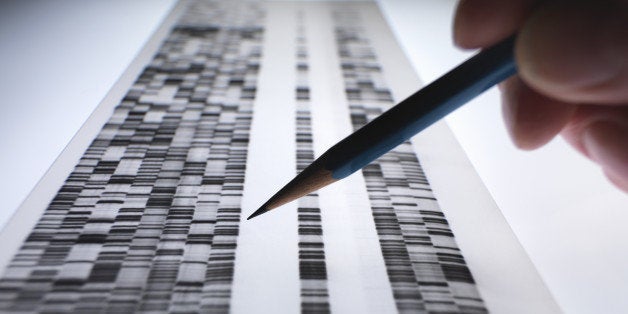
The study of biology often reveals the beauty of natural design and of natural processes. Certainly this is true of the way that bacteria and other organisms defend themselves against attack from viruses. These studies revealed the exquisite way that some bacteria chop up the DNA of invading organisms and use it to create a memory of the invader, the so-called CRISPR/Cas system, which has been receiving massive public attention in recent weeks. Using CRISPR/Cas, bacteria have evolved an "immune system" that helps protect them from attack in the same way that humans have immune cells that maintain a memory of infectious diseases.
Sometimes though, such elegant discoveries lead to technologies that come with risks. Discovery of the bacterial "immune system" has enabled technology to be developed that can manipulate the genome of other organisms, including humans. Once it was demonstrated that CRISPR/Cas9 could be harnessed, the possibility of genetically modifying the human germline became obvious. Indeed, studies in a variety of experimental organisms have demonstrated the ease of manipulating their germlines using CRISPR/Cas.
For society, gene-editing of the human germline could bring benefits but also risks. Importantly, modifying the human germline, unlike most other methods of treating human disease, has implications for subsequent generations and for the human race as a whole. The realization of these risks to the human race led to the global gathering of scientists, lay people, ethicists, religious leaders, legal experts, patients and patient advocates at the National Academies of Sciences in Washington, DC.
Two key questions were addressed. Whether it would be possible and safe to carry out human germline gene-editing, and whether there were situations in which such gene-editing would be appropriate. The answer to the first question was yes: human germline gene editing is likely to be technically possible and, to the best estimation of many scientists at the meeting, likely to be safe. The number of off-target genetic mutations created by CRISPR/Cas has proven to be low in most studies, and is likely to be at least as low as the naturally-occurring mutation rate in human cells. This latter finding suggests that human gene-editing should be a highly accurate process, and a safe one to boot. So, if germline gene-editing is possible and safe, the question becomes whether we should do it.
Some scientists argued that if the technology was safe, accurate and available, why not use it? That view was also supported by some clinicians and patient advocates. Certainly there are some dreadful diseases, such as Huntington's disease, for which no treatment exists that can slow the disease process.
There was less agreement about the use of the technology for generating so-called "enhancing" gene mutations. An example of an enhancing mutation is the creation of a mutation in the CCR5 gene, which plays a crucial part in HIV infection. Individuals with mutations in the CCR5 gene are resistant to infection by HIV, and so creating individuals with this mutation using CRISPR/Cas would protect them from developing AIDS. Finally, most were opposed to using the technology for cosmetic reasons, such as creating individuals with specific eye or hair color, or with increased stature or intelligence.
Conversely some argued that the technology should not (and possibly should never) be used for human germline gene-editing. Some arguments were based on the deeply-held belief that we shouldn't interfere in any way with the human germline, since that could affect future generations. Others argued that the number of individuals for whom there would be a medical need for gene-editing might be very small indeed. Therefore, they argued, scientists and policymakers should act cautiously when considering germline modification, because using the technology for genuine medical need would eventually lead to the use for enhancements and eventually cosmetic reasons - the slippery slope argument.
Moreover, the point was made that even "enhancement" mutations could have unexpected risks for the individuals created and for humans in general. For example, it was reported that individuals with a mutated CCR5 gene, although resistant to HIV, are more susceptible to the West Nile Virus. Some also felt that in many cases there were alternatives already available for either treating people with harmful genetic mutations or to prevent embryos with gene mutations from becoming pregnancies, such as through techniques used routinely in IVF clinics. These views were countered by several who deal with patients directly and spoke openly about the strong desire for people to have their own biological children and for the determination of such couples to have healthy children, free of disease.
At this point in time there has been no firm conclusion on how to proceed with the use of gene-editing technology to modify the human germline, although the conclusion of the meeting's organizers was that basic research should proceed with caution and not be subject to a moratorium. Even those excited by the possibilities presented by the CRISPR/Cas technology seemed to favor a cautious and well thought out approach to its use in a clinical setting. There is a need for more research, and more public engagement to determine how people in society feel about the use of this new ground-breaking technology.